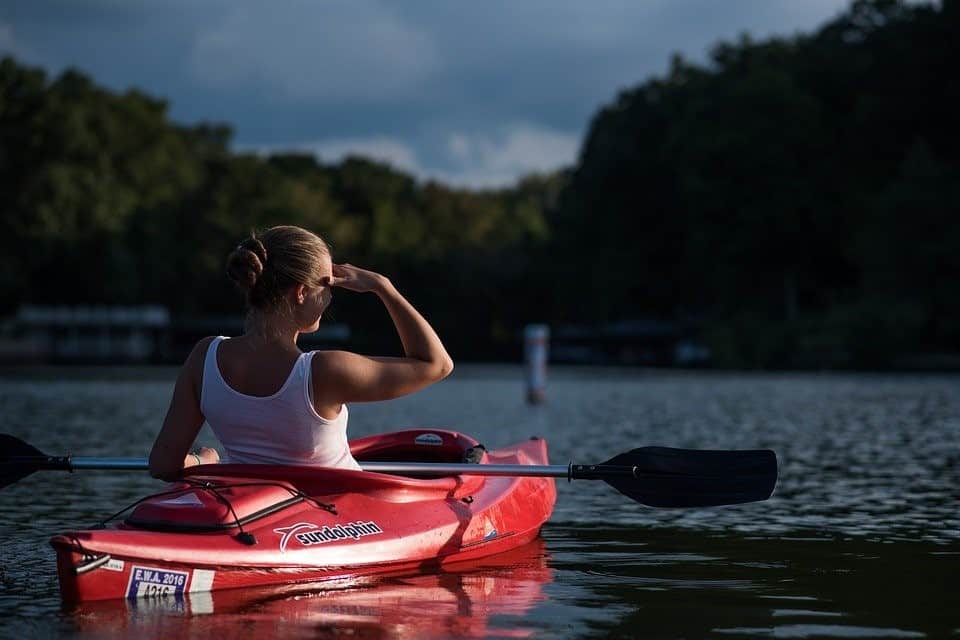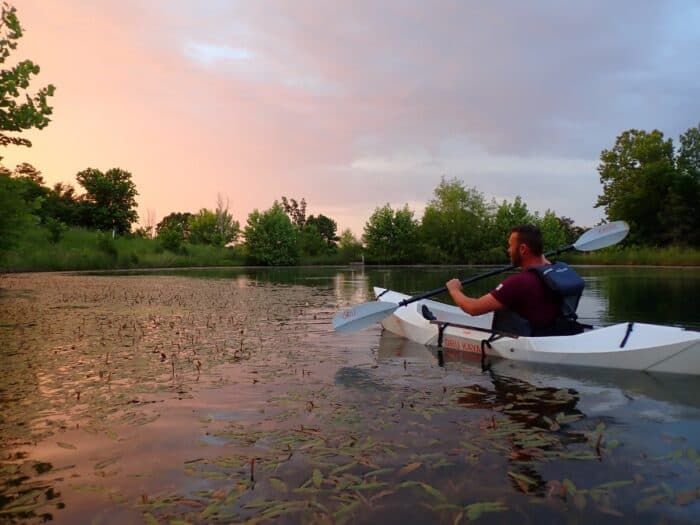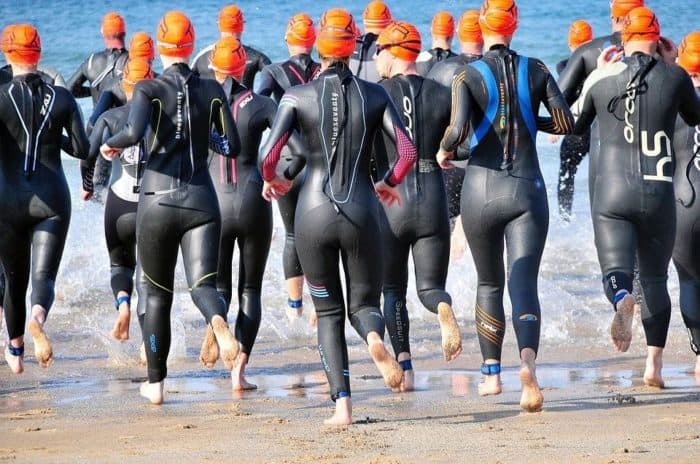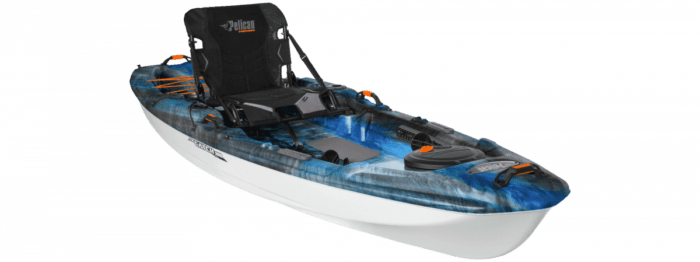Canoe vs Kayak: What’s the Difference?
People have been using canoes for thousands of years. While we can’t say for sure how many thousands of years, archeologists have recently discovered the remains of a dugout canoe dating back 8,000 years, so it goes to reason that canoes have been around for much longer than that period.
On the other hand, Kayaks have been around for a much shorter period, and by shorter, we mean 4,000 years. These two types of boats are all excellent pieces of equipment for people who enjoy recreational paddling, fishing, and as a form of exercise.
Since they technically look alike (sit-inside kayaks and canoes most resemble each other), let’s take a quick look at each of them; see what differences and similarities they have as well as why you might want to choose one over the other.
Also Read: How to Choose a Kayak – Buying Guide
Canoe vs Kayak
There are several similarities and differences between kayaks and canoes. Here are some that stand out:
Difference No.1: The Design of the Boats
This is probably the biggest difference and yet the closest similarities these boats have. Typically, canoes are much bigger than kayaks. They are built with wide frames and open tops – very much like sit-on-top kayaks. However, unlike kayaks, canoes are designed to carry more people and more gear. Kayaks, on the other hand, offer limited space and are much sleeker.
While there are quite a few different types of canoes, the most common are “Canadian” or “recreational” canoes. These tend to be 13 – 17 feet long, have tall sides, sit much higher on the water than kayaks, and have enough space inside for the paddler to sit either on benches that run the width of the beam or kneel on slats.
All canoes have an open-top, which is not the case with kayaks. Yes, there are sit-on-top kayaks with an open-top, but it’s the sit-inside kayaks that most closely resemble a canoe; the biggest difference is that with kayaks, the paddler actually sits inside an enclosed cockpit.
The simplest explanation here would be that you actually “wear” a sit-inside kayak while you are riding a canoe.
Difference No.2: Getting Into the Boat
Since canoes are open vessels, getting into them is a much easier proposition than getting into a kayak. All you have to do to get into a kayak is step onboard. You can easily use the boat’s sides or the dock to steady yourself as you step into the boat.
Getting into a kayak, on the other hand, requires impressive technique. You have to carefully slide your legs into the cockpit while maintaining the necessary balance to keep the boat from tipping over. Although necessary for canoe users as well, this balance isn’t as difficult to achieve with a canoe as it is with a kayak.
However, once you get inside, there is an argument to be made for the comfort that comes with using a kayak. Therefore, many kayaks are snug and quite comfortable, with some being equipped with extremely comfortable seats that even have backrests. Canoes, on the other hand, offer no such luxury. It’s an open space with benches if you are lucky.
Difference No.3: How to Paddle Canoes vs Kayaks
This is really where the rubber meets the road. Since canoes tend to be heavier and bulkier, paddling them calls for much more effort than paddling a kayak. In fact, paddling a canoe often calls for two people since these paddles are shorter than those on a kayak and have a single blade, unlike those of a kayak.
The canoe paddle has a “T” knob at the top and a blade at the bottom. You use it by keeping one hand on the T knob and the other in the middle. You push the paddle down using both hands to propel the canoe.
However, to keep the canoe tracking straight, you need to do the same thing on the other side of the boat as well. Either that or you need a paddling partner who does the same thing on alternate strokes. This synchronization is much easier said than done.
Paddling a kayak, on the other hand, is pretty straight forward. The paddles have two blades, and since kayaks aren’t typically as wide nor as bulky as a canoe, all you have to is grip the middle of the paddle with both hands about two feet apart, then dip each blade alternately into the water.
Canoe or Kayak?
Many personal biases come into play trying to decide between any two things that offer almost similar services. The best way to go about it is to look at the advantages and disadvantages of both.
Advantages of a Canoe
- They are more stable than kayaks thanks to their width
- They are easy to enter as well as exit
- They tend to carry much more gear and provide more space
- Sit higher up on the water, giving you a better view of the surrounding and keeping you drier
Disadvantages of a Canoe
- The open cockpit exposes you to the elements
- Less efficient than kayaks
- Needs more energy to paddle, transport, and maneuver
Advantages of a Kayak
- Designed for efficiency and require less energy to paddle and transport
- More maneuverable on the water
- Sit-inside kayaks protect you from the elements
- Sit-inside kayaks provide you with dry storage options
Disadvantages of a Kayak
- More difficult to enter and exit
- Less stable on the water
- Sits closer to the water, which means you get wetter
- Don’t typically have much space for gear
Choosing Between Canoe vs Kayak
This depends on what you value the most. Is it speed? Then you want to go for a kayak.
Are you more interested in hauling more gear and taking leisurely paddles around the local lake? Then you should go for a canoe.
Either one of these boats will serve you well; it all depends on what kind of service you want!
Categories: Kayak













2 Comments
Jake May on August 12, 2022
It’s funny, but I’ve never experienced the canoe 2 person synchronization problem. With my bud we go straight and don’t have to worry.
I do like canoes more, you can bring a small fridge if you want!
David Cuthill on January 22, 2023
In naval architecture the basic vessel class is the Canoe which is in plan view, shaped wide amidships with pointed ends.
The canoe is also intended to be portable by the crew.
Some sailing vessels are “canoe ended” because their plan lines converge to points
A kayak is a “typeof” canoe, because it complies with the basic class type. In addition it has a special-to-type usage as it is propelled with a double-bladed paddle by a crew which sits inside.
An open touring canoe is a “typeof” canoe.
Its special-to-type features are that the crew sits inside on thwarts, the legs may be kneeling or sitting, and the propulsion is usually done with a single-bladed paddle, although poles can be used.
An open Touring Kayak is partially decked fore and aft with a large open space for the crew amidships. As such, it is a “typeof” Canoe.
A Slalom Kayak is a typeof canoe with crew of one sitting inside a fully decked vessel using double-bladed paddles.
A Slalom C1 (C for Canadian, not C for Canoe). See ICF definition) is a fully-decked vessel where the crew of one sits on a saddle in the centre of the craft, with the legs kneeling. Propulsion is with a single-bladed paddle.
A sprint C1 is a “typeof” Canoe which is partially decked.
Short conclusion: the hierarchy is as follows: Canoe, typeof canoe.
It is moving away from the definition of the basic canoe form to define two sports (canoeing and kayaking).
The canoe form is identical between the two. The usage is different.
The activity is Canoeing, as you go canoeing in a Kayak, Canoeing in a C1. You follow the rules of the International Canoe Federation, The Scottish Canoe Association, British Canoeing and so on.
The basic pointed ended shape and portability defines what we call the Canoe.
It would help the cause if the Open Canadian Canoe type could be re-named to allow it to fit the hierarchy Canoe: Typeof Canoe